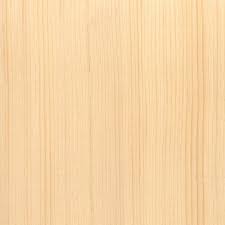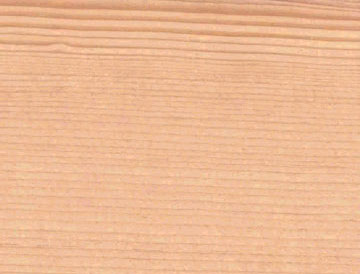Spruce is a popular softwood that is known for its use in producing paper pulp and also in the construction industry for making doors, furniture, panelling, and interior trim. Spruce is also commonly used for making the soundboards of some musical instruments. It’s lightweight and stable wood that is not very durable or hard but is available widely and comes at a cheap price.
Here’s everything you need to know about Spruce wood properties, types and uses.
About Spruce
Spruce is a softwood that is often used as an alternative to pine because they both share similar density and strength characteristics. Because it is softwood with low hardness and density, spruce is often prone to dents and scratches, which is why it is not very suitable for outdoor uses and flooring.
Spruce hails from the Pinaceae family of coniferous trees. It has many species, all of which bear the scientific name Picea. Spruce trees are about 20 to 60 m tall. Some species such as Sitka spruce can have mature trees as tall as 250-300 feet.
All Spruce species are basically the same in terms of appearance, durability and workability. The wood colour ranges from creamy white to yellowish-brown or red. It has a fine, even texture and a straight grain. Spruce is almost non-durable in terms of resistance to rot and decay. It is generally easy to work with, though the presence of knots can sometimes cause problems. It glues and finishes well, but staining can result in blotchy or inconsistent results.
Types (Species) & Spruce Wood Properties
There are a total of 35 species of Spruce, of which White spruce, Sitka spruce, Norway spruce, and Black spruce are the most famous. Here’s a brief overview of the spruce species and their respective properties.
1. White Spruce Wood
Colour: White spruce is white or yellowish coloured and has creamy white sapwood. Black knots may be present.
Grain: It has a straight grain and a uniform texture.
Durability: Low to moderate, it is stable and has basic resistance to rot.
Trees:Trees are about 34 metres tall and have a 6–1.0 m trunk diameter. The white spruce trees are primarily found in Northern North America.
Strength and hardness: Janka rating is 480 lbf and the average dried weight is 425 kg/m3, which means the wood is neither hard nor heavy.
Workability and uses: It is generally easy to work with and glues and finishes well. Common uses include paper pulp, construction lumber, crates, and millwork.
2. Sitka Spruce Wood
Colour: Sitka spruce heartwood is cream/white to yellow, sometimes with a fine pinkish-red hue. The sapwood is creamy white and not clearly distinguishable. Sitka timber is also known to sometimes have a distinct grain pattern called bearclaw.
Grain: It has a straight grain and a uniform, fine texture.
Durability: Low durability and slight to no resistance to decay.
Trees: Trees are about 40-50 metres tall and have a 1.2-1.8 m trunk diameter. The Sitka spruce trees are native to Northwestern North America.
Strength and hardness: Janka rating is 510 lbf and the average dried weight is 425 kg/m3, which means the wood is neither hard nor heavy.
Workability and uses: It is generally easy to work with and glues and finishes well. Sitka spruce is easily available and cheap, however, the wood produced from old trees or quarter sawn lumber free of knots can be quite expensive.
Sitka spruce is used for construction lumber, crates, boxes, millwork, furniture, soundboards of musical instruments, masts and spars for boats, aircraft components, wind turbine blades, etc.
3. Norway Spruce Wood
Scientific name: Picea abies; other names: European Spruce, German Spruce
Colour: Norway spruce is creamy white with a yellowish-red hue and has creamy white sapwood.
Grain: It has a straight grain and a fine, even texture.
Durability: Poor resistance to decay
Trees: Trees are about 35-55 metres tall and have a 1-1.5 m trunk diameter. The Norway spruce trees are primarily found in Northern and Central Europe.
Strength and hardness: Janka rating is 380 lbf and the average dried weight is 405 kg/m3, which means the wood is neither hard nor heavy.
Workability and Uses: It is generally easy to work with and glues and finishes well. Staining can be inconsistent. Norway Spruce is easily and widely available at cheap prices. Common uses include paper pulp, construction lumber, Christmas trees, crates, musical instruments, and millwork.
4. Black Spruce Wood
Scientific name: Picea mariana
Colour: Black spruce is creamy white or yellowish coloured and has almost white sapwood.
Grain: It has a straight grain and a fine, uniform texture.
Durability: The heartwood is poorly or slightly resistant to decay but it is non durable.
Trees: Trees are about 10-15 metres tall and have a .3-.5 m trunk diameter. The Black spruce trees are primarily found in Northern North America.
Strength and hardness: Janka rating is 520 lbf and the average dried weight is 450 kg/m3, which means the wood is neither hard nor heavy.
Workability and uses: It is generally easy to work with and glues and finishes well. Spruce is easy and cheap to buy, but old tree woods are expensive. Common uses include paper pulp, construction lumber, crates, and millwork.
5. Red Spruce Wood
Scientific name: Picea rubens
Colour: Red spruce is creamy white with a yellow or red hue and has creamy white sapwood.
Grain: It has a straight grain and a fine, even texture.
Durability: the heartwood is slightly or non-resistance to rot.
Trees: Trees are about 24-34 metres tall and have a 6–1.4 m trunk diameter. The Red spruce trees are primarily found in Eastern North America.
Strength and hardness: Janka rating is 490 lbf and the average dried weight is 435 kg/m3, which means the wood is neither hard nor heavy.
Workability and uses: It is generally easy to work with if there are no knots present and glues and finishes well. Locally-sourced spruce is cheap but imported wood and ones procured from old trees can be expensive. Common uses include paper pulp, construction lumber, crates, Christmas trees, musical instruments, and millwork.
Availability, Price & Uses of Spruce Wood
Construction-grade spruce is easily available and inexpensively priced, especially the locally-sourced wood. Imported wood can be moderately priced. Different species of spruce come from different regions around the world. Norway Spruce, for instance, is found in Europe, while Sitka spruce and White spruce are limited to North American countries.
Instrument-grade Norway Spruce is the most expensive of all species of spruce wood.
Common uses of spruce include paper pulp, furniture, construction, lumber, crates and boxes, millwork, and soundboards for musical instruments.
Why use Spruce Wood (and Why Not)
Spruce is one of the popular softwood species, which is both inexpensive and widely available.
The top advantages of Spruce include low cost, uniform texture, great workability, and basic resistance to rot. Spruce is often treated to make it more durable and resistant, but it can be expensive.
Spruce also has some disadvantages. For one, it is not very durable and cannot be used for outdoor applications. It also needs constant care and high maintenance. Spruce is prone to insect attacks and cannot be in contact with the earth, which is why it is not preferred for flooring.
Buy top quality Spruce wood at the best price online from CameroonTimberExportSARL.






